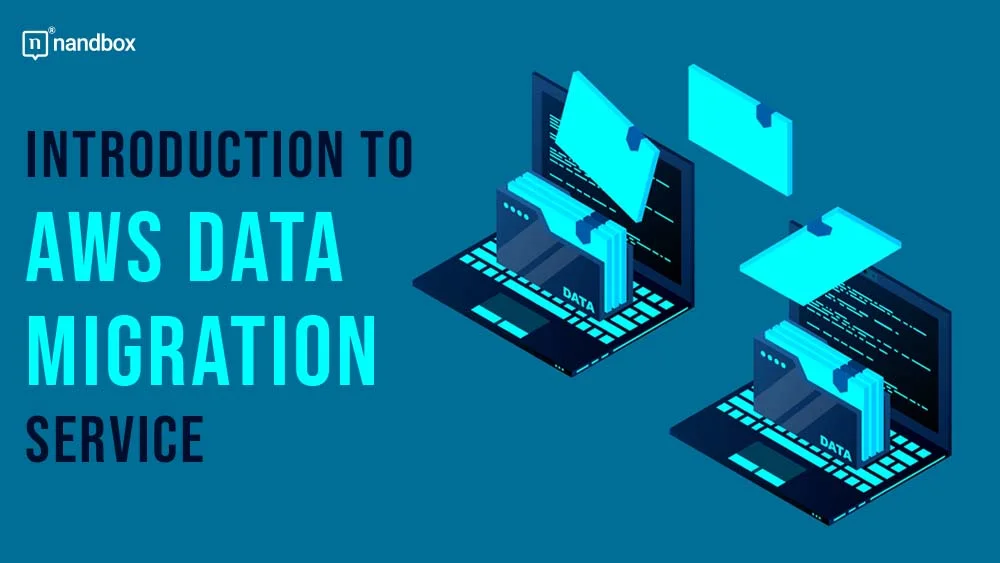Introduction to AWS Cloud Data Migration Services: Key Features and Benefits
In the digital ecosystem, organizations are increasingly embracing cloud computing services. That is, to help them with inventory management and business operations and even cut expenses in the long run. One of the basic elements of moving to cloud architecture is migrating data from onsite systems to those of the cloud. This can be even more complex and troublesome, hence the need for immutable planning and execution. On the one hand, the task has turned out to be a time-consuming and complicated process With the rise services such as AWS Data Migration Service (DMS), it has become simpler and more convenient than ever for the data migration process to be automated.
Key Features of AWS Cloud Data Migration Services
Simple to Use
Despite its design to facilitate complex data migrations for non-technical users, AWS DMS is renowned for its ease of use. Also, the user-friendly interface simplifies the transition to this platform for even non-professionals, eliminating the constant need for experts.
Range of Source Databases Supported
One of the features that distinctly marks AWS DMS is that it supports practically all kinds of source databases. In the context of telecom data warehouse solutions, AWS DMS provides robust support for migrating extensive and complex datasets efficiently. Ones that include Oracle, MySQL, PostgreSQL, and SQL Server. This flexibility allows it to work in many IT environments, open to all tasks.
Continuous Data Replication
AWS DMS enables a continuous data pipeline. This pipeline transforms data without interrupting user workflows. Which instantly reflects on several changes on the far-end side. Operating real-time technology in this manner significantly reduces the risk of data loss. Additionally, it ensures that information remains complete, error-free, and consistent across different systems.
Minimal Downtime
Through AWS DMS, organizations can avoid lengthy periods of downtime because the service makes the migration transparent and provides an integrated dashboard that helps avoid issues. The service is provided through the implementation of a data replication strategy that guarantees businesses can continue their operations with no downtime during the cloud transition process.
Benefits of AWS Cloud Data Migration Services
Cost-Effective Solution
AWS DMS represents a very viable option in terms of cost and data migration; thus, there is no necessity to settle for big equipment that would result in maintenance. You can charge organizations less than what they need. Using the subscription basis of ‘pay as you go’ for the use of resources.
Scalability
AWS DMS offers a scalable way for organizations to keep up with their company’s growth and change disruptions. Also, it can take up a single database or a data center as long as it encompasses projects of any size and complexity.
Security
Security is a key reason for AWS’s leadership, with DMS providing robust encryption and access controls to protect data integrity during migration. Additionally, AWS adheres to industry best practices and intelligent security measures to safeguard sensitive information.
Integration with Other AWS Services
AWS DMS establishes easy point-to-point access to other AWS services like Amazon S3 and Amazon Redshift, which in turn allows for the building of advanced data management solutions The interoperability of AWS DMS will increase the value proposition for organizations and enable them to perform at their full potential in the comprehensive AWS ecosystem.
Use Cases
You can use AWS DMS for a variety of data migration scenarios, including:
- Migration to the cloud: Moving on-premises databases to the cloud will constitute one of the top business trends for getting access to greater agility and scalability.
- Database consolidation: Elimination of redundancies in reports and outdated databases by centralizing data storage for better efficacy and cost reduction.
- Data warehousing: One of the stages is data transfer into a data warehouse that developers use for advanced analytics and business intelligence.
Getting Started with AWS Cloud Data Migration Services
To get started with AWS DMS, organizations need to:
- Setting up migration tasks: first, the endpoints (source and target), selecting the data, and finally, configuration replication specifics.
- Monitoring and troubleshooting: Tracking migrations, finding any issues or if any parameters are wrong, and taking into consideration the solutions.
Best Practices
When using AWS DMS, it’s essential to follow best practices to ensure a successful migration:
- Planning and preparation: A comprehensive environmental assessment must be conducted to devise a migration plan that covers the prime motive and details of the migration.
- Testing: Take the process of migration through testing in non-productive conditions where all the inconsistencies are merely detected and managed.
- Monitoring performance: Constantly monitor the migration, and performance architectures to guarantee the app works well and the process is complete on time.
Challenges and Solutions
While AWS DMS offers many benefits, organizations may encounter challenges during the migration process, such as:
- Compatibility issues: Incompatibility is one of the most significant challenges in terms of data formats, schemas, and database versions. In that regard, businesses should ensure they inform all stakeholders about the compatibility process and undertake the necessary adjustments.
- Data integrity: The integrity of the data entering the system during migration must be guaranteed so there is no occurrence of corrupted or missing data. AWS DMS utilizes the techniques of checksum assignment and error detection to maintain consistency with data and the correctness of information.
- Bandwidth limitations: Lack of robust network bandwidth can cause some delays in the migration process and affect the throughput. Hence, organizations opt for network configuration optimizations or data planning solutions to tackle redundant traffic or they schedule the migration for off-peak hours.
Comparison with Other Data Migration Services
While making arrangements for switching to data migration solutions, companies may check out the AWS DMS alternatives. While each service has its strengths and weaknesses, AWS DMS offers several advantages, including:
- Comprehensive feature set: AWS DMS has a rich group of tools that can address a variety of migration patterns. Therefore, it is a suitable decision for almost all resizing cases.
- Scalability and flexibility: AWS DMS helps in accomplishing that by permitting organizations to lean on project scaling and adaptation to design and carry out migration projects in a way they see fit.
- Integration with AWS ecosystem: Further, integrating with the other AWS tools gives organizations a chance to establish a more comprehensive data management strategy.
Case Studies
Real-World Examples of Successful Migrations
- Company A: The Oracle database on-premises was successfully replaced with Amazon RDS using AWS DMS, reducing procedures expenditures and heightening performance.
- Company B: Company B united their several databases of Microsoft SQL Server to one system in Amazon Redshift for consolidated analysis and reports, using AWS DMS for hassle-free data migration that does not disrupt any operations.
Future Trends
As cloud adoption continues to rise, we expect that the demand for data migration services like AWS DMS will grow. In the future, we can expect to see:
- Evolution of AWS DMS: AWS is probably going to be focused on improvements and add-ons DMS to satisfy customers’ requirements, & these technologies will come in the future.
- Industry Adoption: As a result, organizations from different sectors in a more comprehensive package work. Code facilitates the adaptation of cloud computing and includes powerful benefits.
Conclusion
Data Migration Service available from AWS provides effective and unsurpassed mechanisms for transferring data into the cloud. DMS on AWS went ahead introducing the market with a straightforward infrastructure, a quick scalable service, and, as icing on the cake, a set of nice features that propelled users to bridge the data migration gaps and access the cloud.







